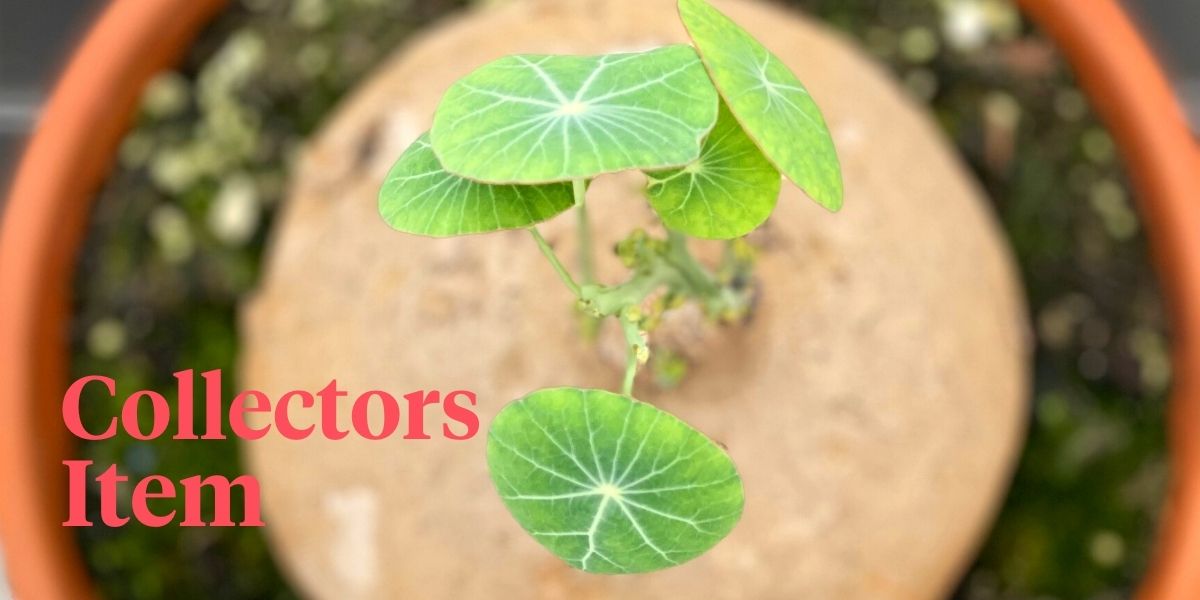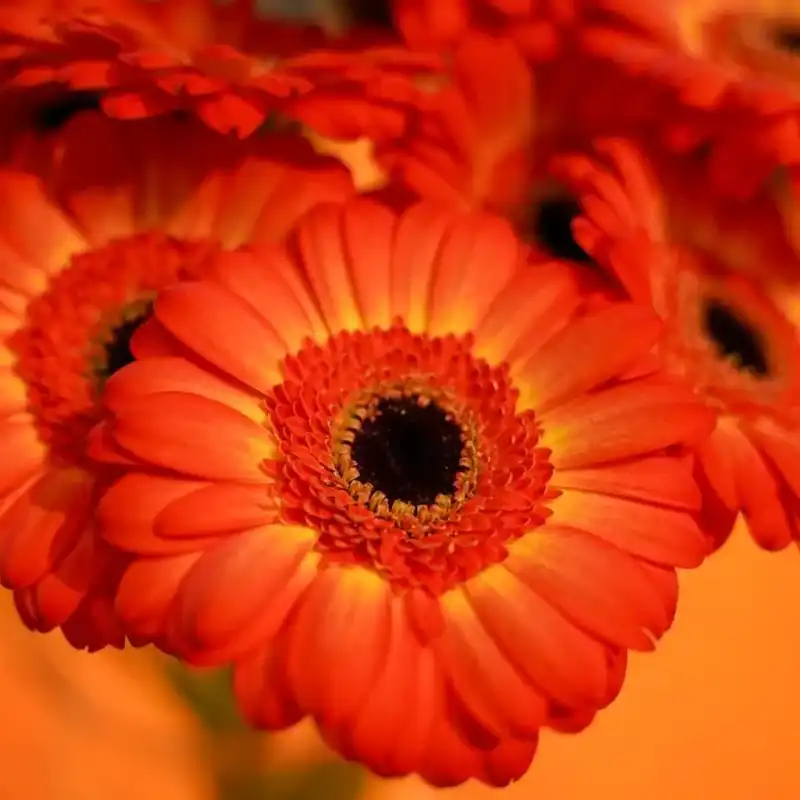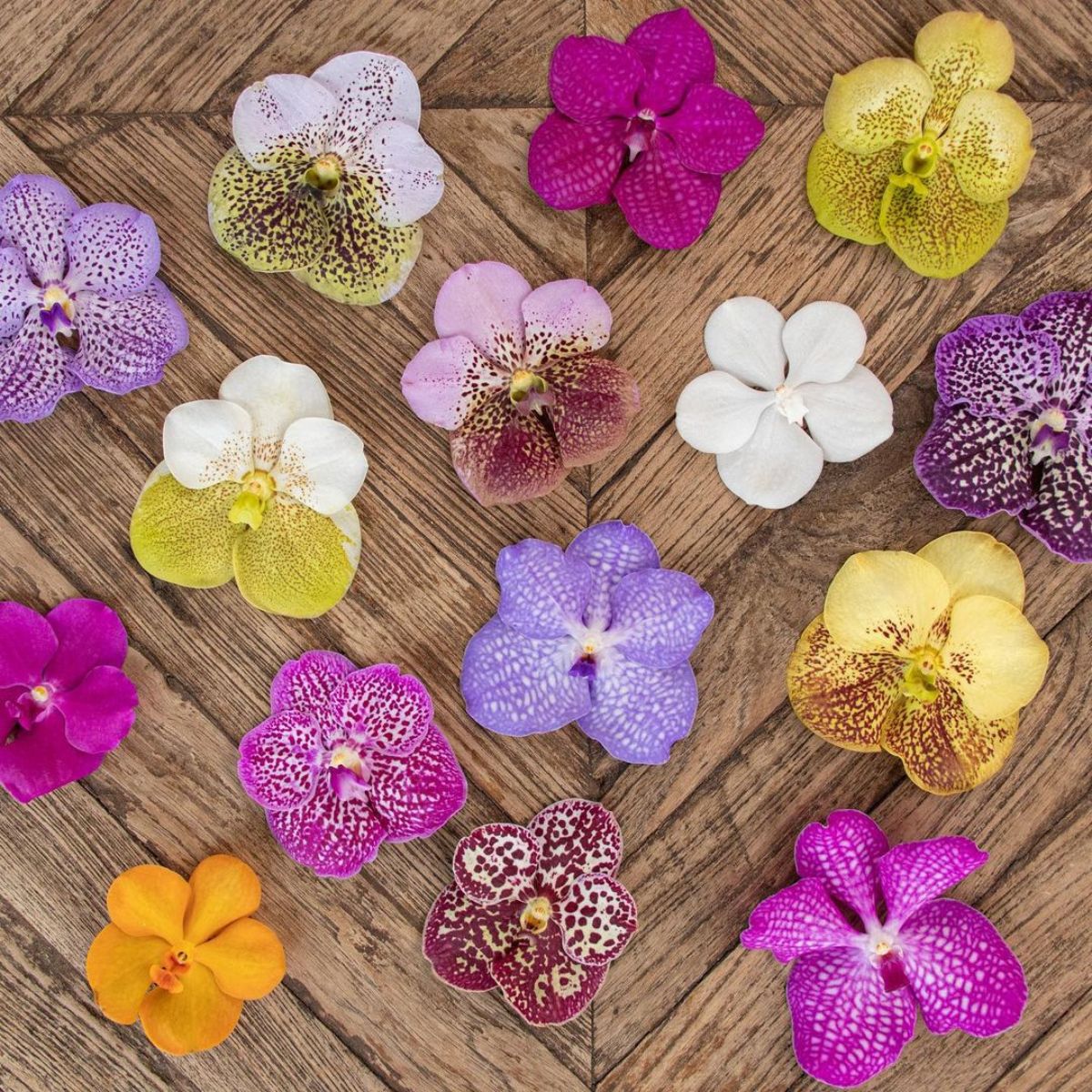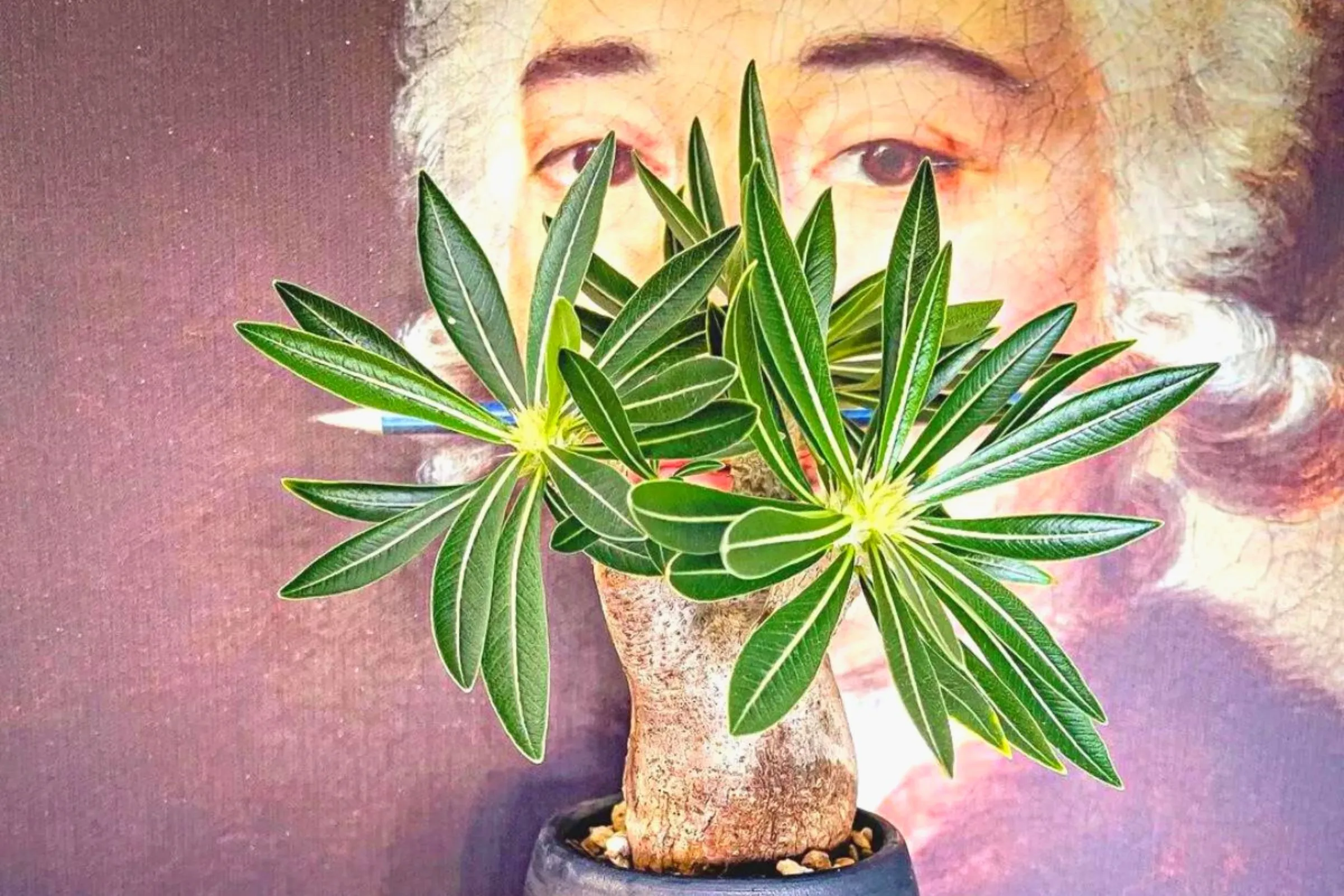Stephania Erecta is a very popular plant that belongs to the Caudex Plants family. To explain in short what caudex is: the caudex of a plant is the stem, the rootstock from where new growth arises. The related term caudiciform, literally meaning stem-like, is sometimes used to mean thick-stemmed. Caudiciform plants or fat plants are a totally unrelated group of plants all having a fat stem or trunk at the base from which the stems grow. If you want to know more about Stephania Erecta, how to care for this type of plant and why this is a great addition to your home plants, keep reading this article.
Stephania Erecta - Everything to Know About This Plant
Stephania Erecta, also known as the cinnamon vine, is a unique and fascinating caudex plant that has been gaining popularity among plant enthusiasts in recent years. With its distinct cinnamon scent and striking appearance, it's no wonder why Stephania erecta has become one of the most famous caudex plants.
Originating from Southeast Asia, this plant belongs to the Menispermaceae family and is commonly found in Thailand, Cambodia, Vietnam, and other nearby regions. In its natural habitat, it grows as a vine, but when grown as a houseplant, it can also be trained as a bushy or shrub-like plant.
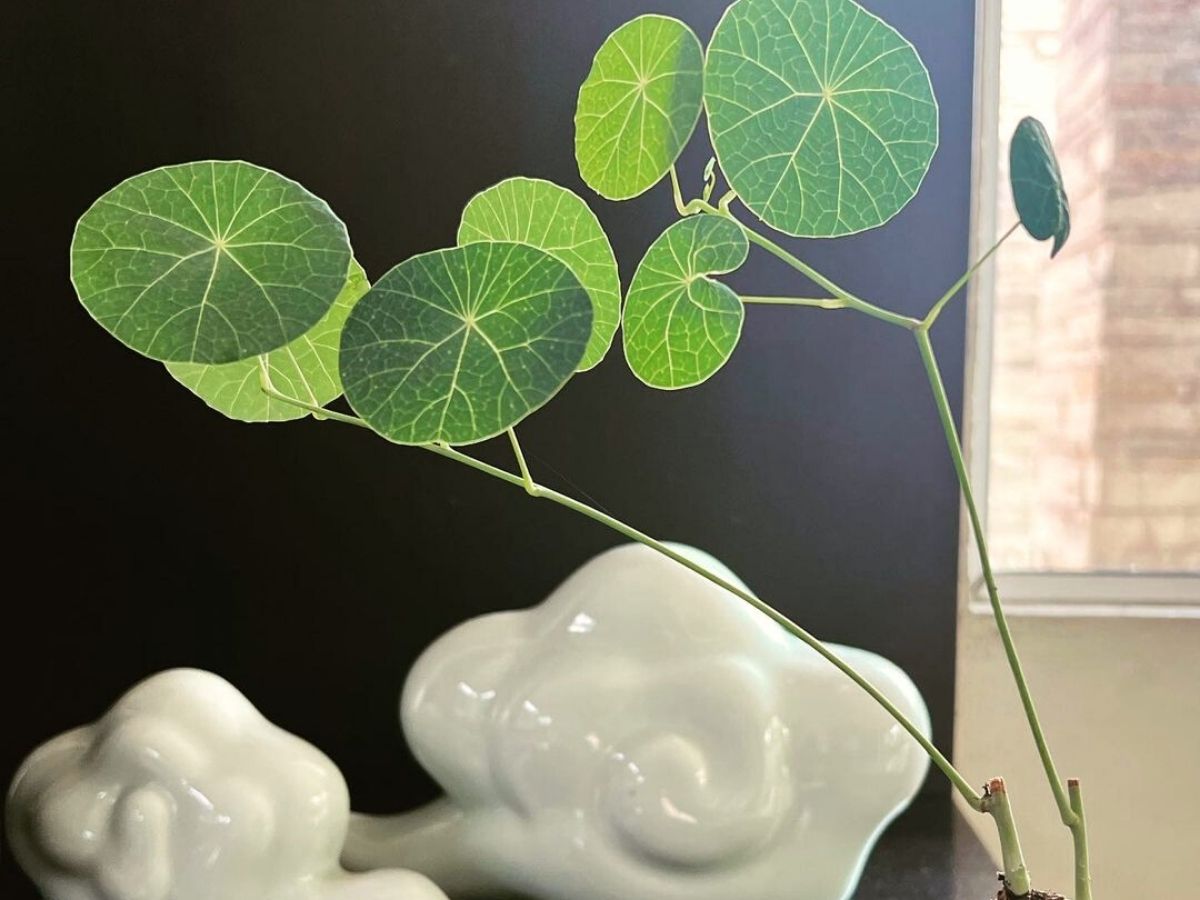
One of its most unique features of it is its caudex, which is a swollen stem base that stores nutrients and water, allowing the plant to survive in harsh environments. The Stephania Erecta caudex is often compared to a potato or sweet potato, and it can grow up to several inches in diameter.
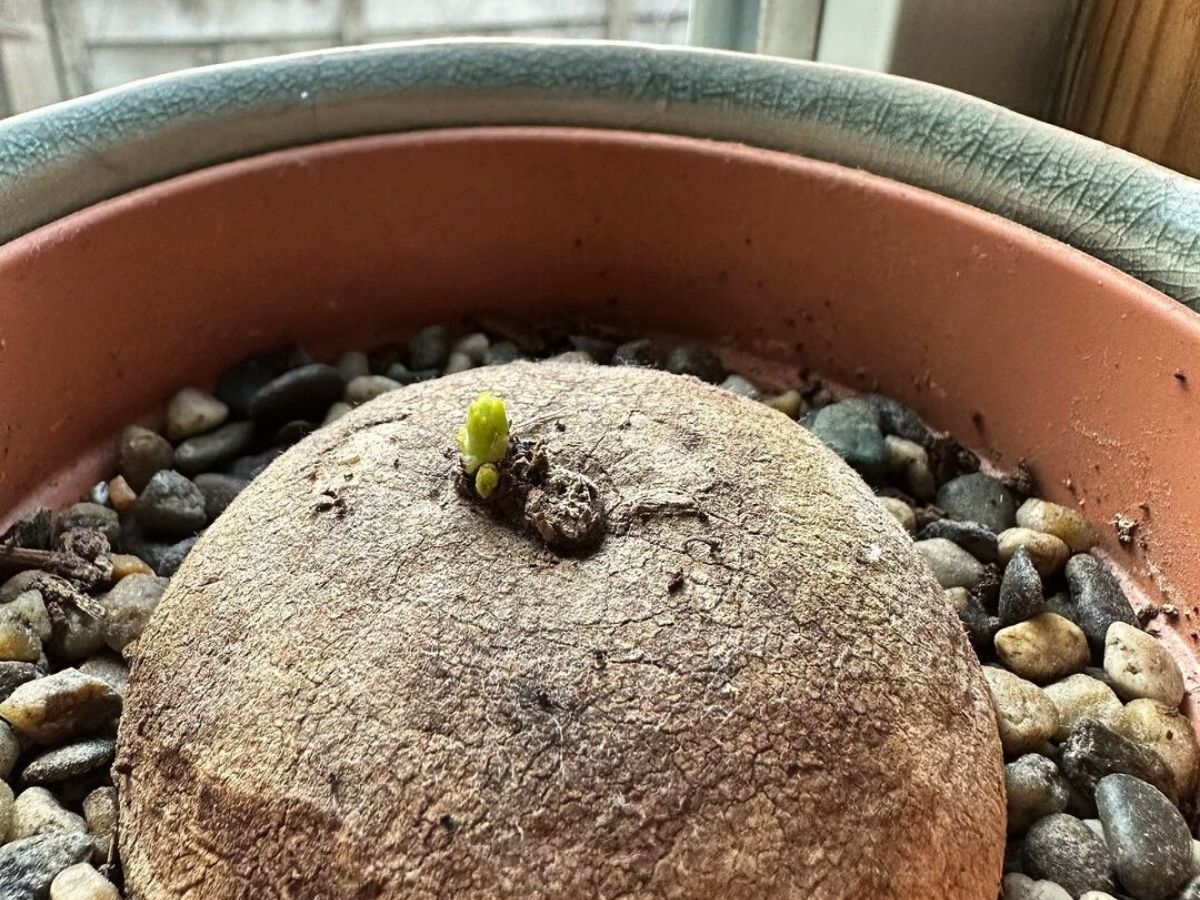
Aside from its caudex, the plant also has beautiful foliage. Its leaves are green and heart-shaped, with a glossy texture that adds to its overall appeal. The plant also produces small, inconspicuous flowers that have a distinct cinnamon scent. This is a relatively easy plant to care for, making it a popular choice among beginners and experienced plant enthusiasts alike. It prefers well-draining soil and moderate to bright indirect light and should be watered sparingly to avoid overwatering and root rot. See how to care for a Stephania Erecta.
One of the reasons why this type of caudex has become so famous among these types of plants is its unique growth habit. When grown as a vine, the plant can climb up walls or trellises, making it a great choice for vertical gardens or as a statement piece in any room. It can also be grown as a bushy or shrub-like plant, which allows for even more versatility in its placement and use.
Another reason why Stephania Erecta plant is so popular is its use in traditional medicine. In Southeast Asia, the plant has been used for centuries to treat a variety of ailments, including fever, diarrhea, and respiratory issues. The plant contains alkaloids and other compounds that have been shown to have medicinal properties, making it a valuable resource in traditional medicine practices.
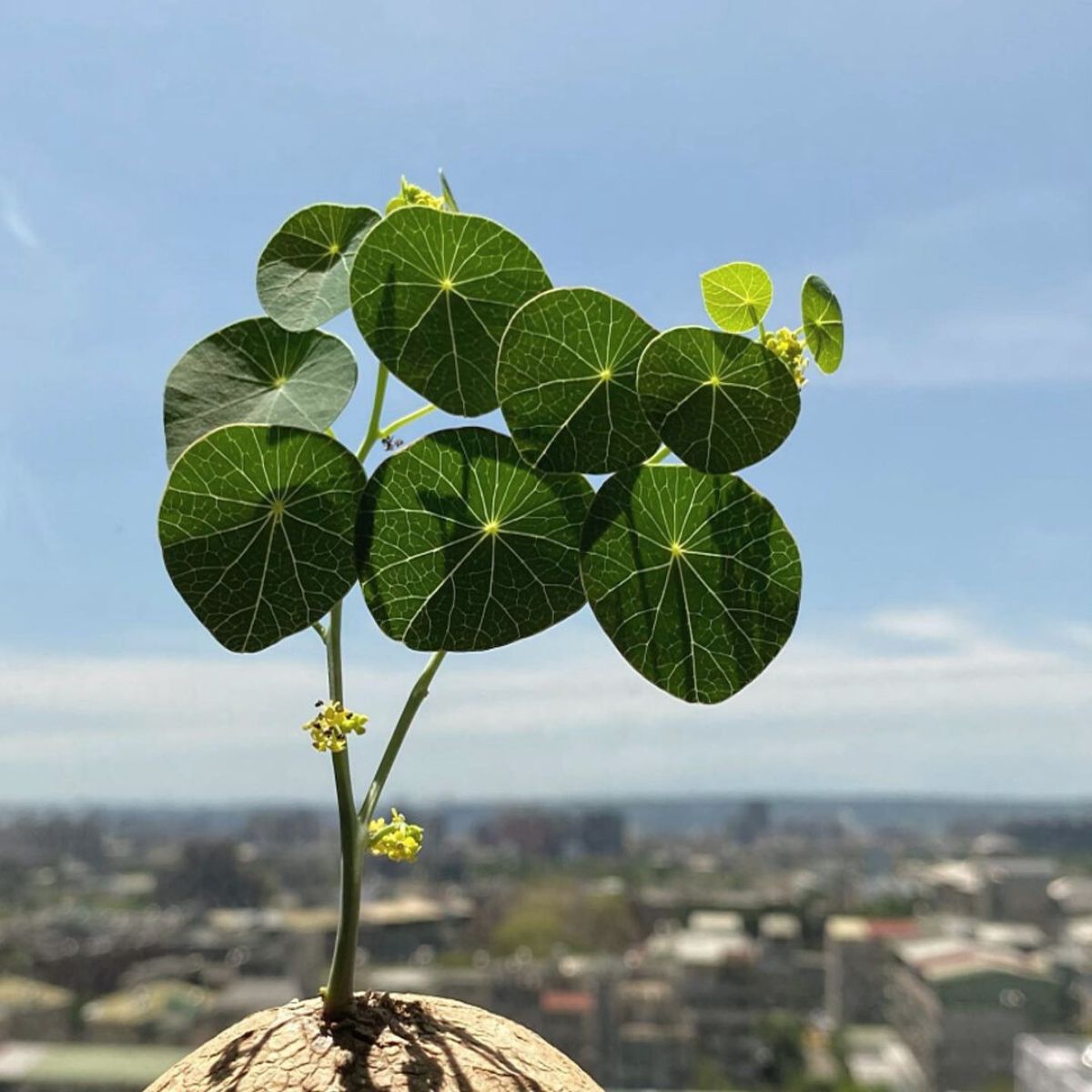
Notably, the bulb has also gained popularity among collectors and plant enthusiasts due to its rarity. While it can be propagated from cuttings or seeds, it can be difficult to find in some areas, making it a prized addition to any plant collection. The Stephania Erecta plant has caught the attention of numerous growers worldwide, becoming the exclusive focus for some, such as Ansu, a renowned vanda specialist. In 2019, this grower began cultivating a selection of exceptional Stephania Erecta plants and has since dedicated their efforts to Vanda Orchids and Caudex Plants.
In recent years, it has become a celebrity in the plant world, with many notable plant influencers and collectors showcasing their specimens on social media platforms like Instagram and TikTok. Its unique appearance and ease of care have made it a popular choice among plant lovers of all ages and experience levels.
How Should You Care for a Stephania Erecta Plant?
The care handles for caudex plants are very specific if you want your plant to fully thrive and survive. Stephania Erecta is a rare and fascinating plant that is native to tropical regions of Asia and Africa. It is known for its thick, swollen caudex or stem, which gives it a unique and striking appearance.
What are Stephania Erecta's lighting requirements? This type of caudex plant requires bright, indirect light to thrive. They can also tolerate some direct sunlight, but it should be limited to a few hours a day. Too much direct sunlight can scorch the plant's leaves and cause them to wilt. Therefore, it is best to place your plant near a window that receives bright, indirect light for most of the day.
Caudex Stephania Erecta plants thrive in warm and humid environments. They prefer temperatures between 65-80°F (18-27°C). During the winter months, it is important to protect the plant from cold drafts and temperatures below 60°F (15°C). The plant also prefers a high level of humidity, which can be achieved by placing a tray of water near the plant or by using a humidifier.
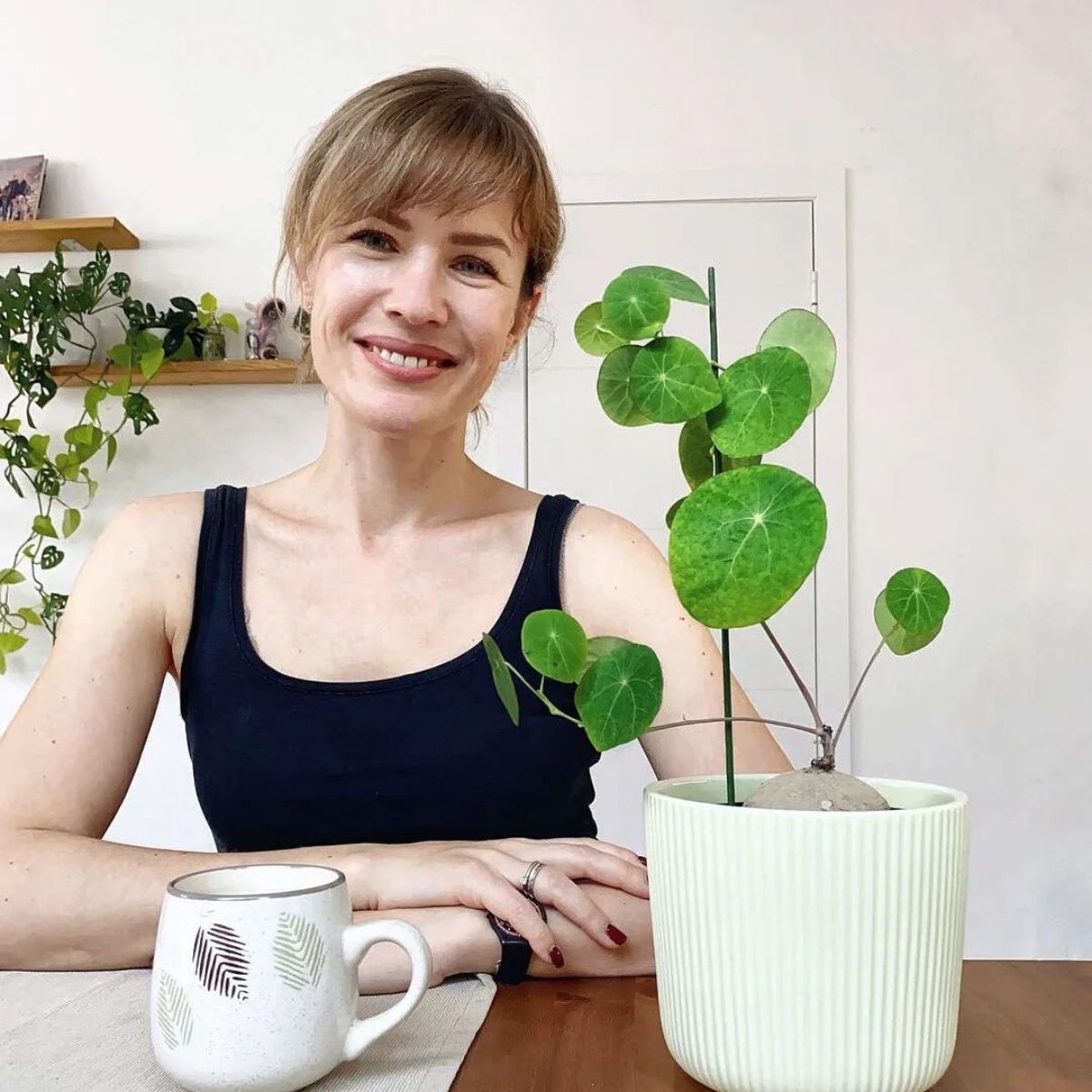
How often to water a Stephania Erecta? Here are some great tips! Watering is an essential aspect of Stephania Erecta care. The plant requires a well-draining soil mix, as the caudex can rot if it is constantly moist. Water the plant when the top inch of soil feels dry to the touch, and be sure to water thoroughly, allowing excess water to drain away. Avoid overwatering or letting the plant sit in standing water, as this can cause root rot.
Fertilizing a Stephania Erecta is important for promoting healthy growth. Use a balanced fertilizer once a month during the growing season (spring and summer). During the winter months, reduce fertilization to every other month. Be sure to dilute the fertilizer to half-strength to avoid burning the plant's roots.
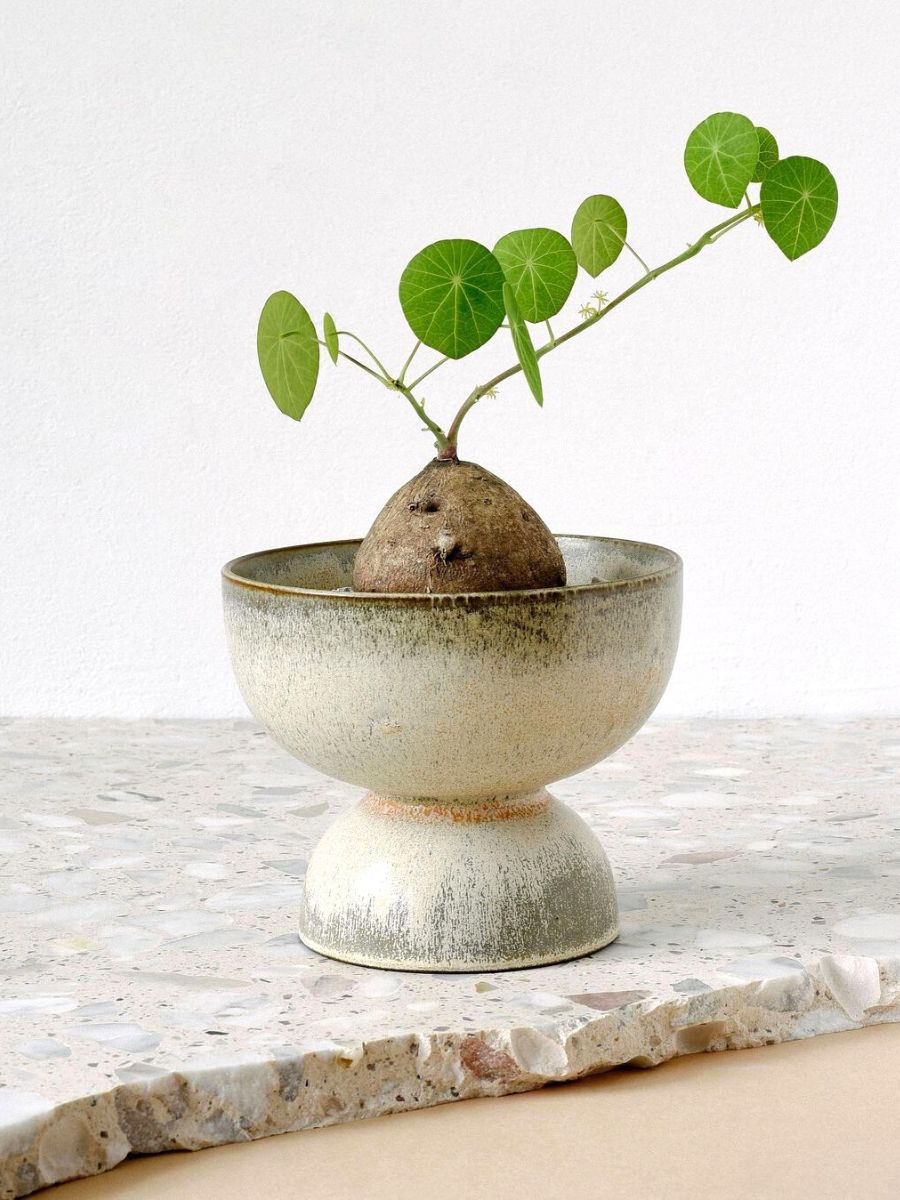
Caudex Stephania Erecta plants do not require much pruning, but it is a good idea to remove any dead or yellowing leaves to promote healthy growth. You can also trim back any leggy stems to encourage bushier growth.
Why Does My Stephania Erecta Plant Have No Leaves?
Stephania Erecta, a unique and intriguing plant species and one of the most known caudex plants, possesses a caudex that is strikingly devoid of leaves. This distinctive characteristic can be attributed to several factors that contribute to its survival and growth strategy.
The Stephania Erecta bulb, also known as a swollen stem, serves as the storage organ for nutrients and water in many plant species. Its main purpose is to sustain the plant during periods of drought or unfavorable conditions. By storing resources within the caudex, the plant can survive and continue to grow even when external resources are scarce.

In the case of this plant, the absence of leaves on the caudex is an adaptation to arid or semi-arid environments. Leaves are highly vulnerable to water loss through transpiration, which can be significant in dry conditions. By eliminating leaves from the caudex, Stephania Erecta minimizes water loss and conserves vital moisture, enhancing its ability to endure prolonged periods of drought.
Furthermore, the absence of leaves on caudex Stephania allows the plant to allocate more energy and resources toward other critical functions. With leaves being energy-intensive structures involved in photosynthesis, the plant can divert these resources toward root development, caudex growth, and reproduction. This allocation strategy enables the plant to strengthen its underground storage system and increase its chances of survival during harsh environmental conditions.
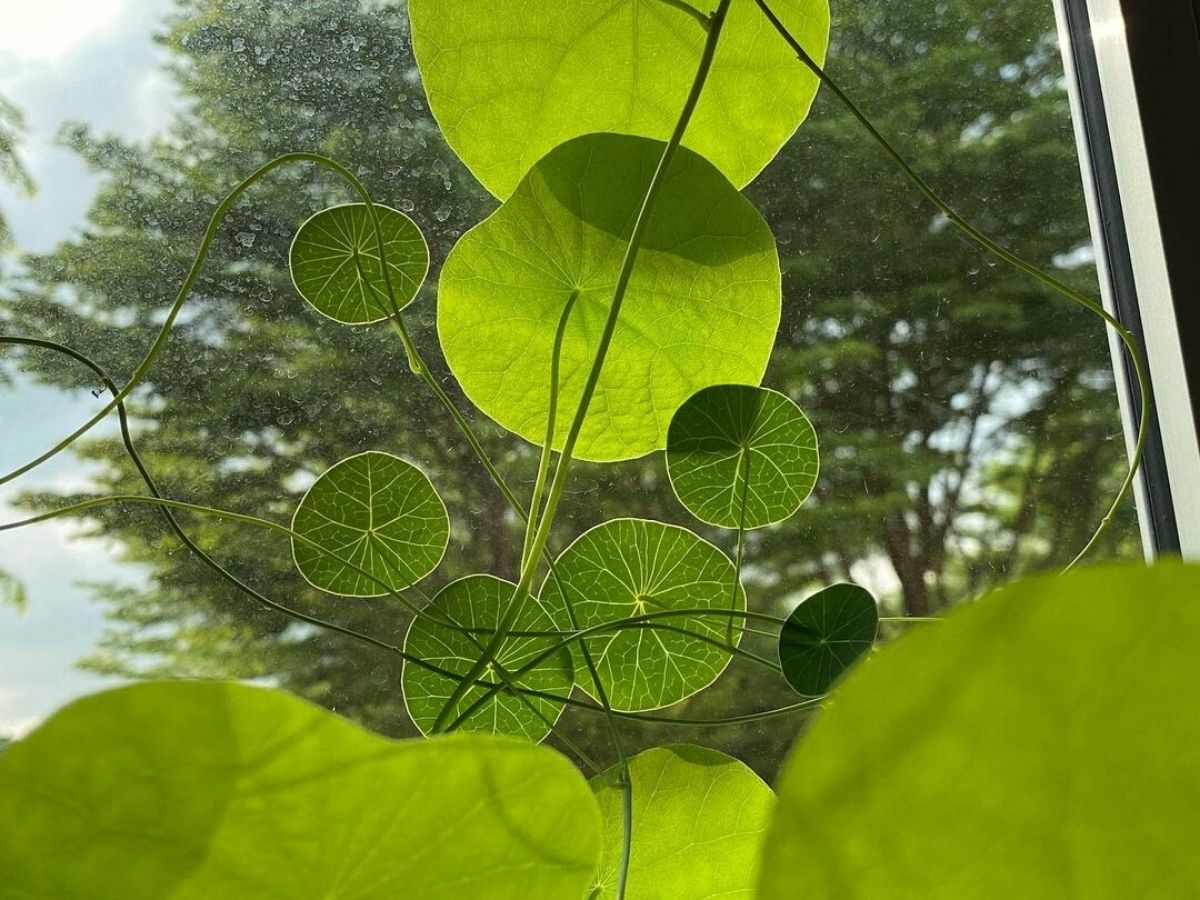
The evolutionary advantage of lacking leaves is also associated with protection against herbivory. Leafless caudices can be less appealing to herbivores as they lack the nutritious green tissue typically targeted by grazing animals. This defense mechanism increases the plant's chances of survival and reduces the risk of damage caused by herbivorous organisms.
Growing Stephania Erecta
Growing and propagating a Stephania Erecta can be an exciting and rewarding experience. Here is a step-by-step guide to help you successfully cultivate and propagate this unique plant:
Sourcing the Plant
Obtain a healthy Stephania erecta plant from a reputable nursery, or specialized plant seller, or through online sources. Ensure that the plant is sourced legally and ethically.
Potting and Soil
Select a well-draining pot or container with drainage holes to prevent waterlogging. Fill the container with a well-draining potting mix that consists of equal parts of peat moss, perlite, and sand. This type of soil mixture replicates the plant's natural habitat.
Planting the Caudex
Gently remove the plant from its nursery pot, being careful not to damage the roots or caudex. Place the caudex horizontally on the soil surface, partially burying it while ensuring the top remains exposed. The caudex should not be completely covered with soil.
Light and Temperature
Provide the caudex Stephania plant with bright, indirect light. It thrives in temperatures ranging from 70°F to 85°F (21°C to 29°C). Protect the plant from direct sunlight, as excessive heat or intense light can damage the caudex.
Watering
Water Stephania Erecta thoroughly but infrequently. Allow the soil to dry out partially between waterings to prevent overwatering, as excess moisture can lead to root rot. Aim for a balance, providing enough water to keep the soil slightly moist but not saturated.
Humidity and Air Circulation
The Stephania Erecta plant prefers moderately humid conditions. Increase humidity around the plant by placing a tray filled with water near it or by using a humidifier. Ensure good air circulation to prevent fungal diseases.
Fertilization
Feed the plant with a balanced, water-soluble fertilizer during the growing season (spring and summer) every four to six weeks. Follow the instructions on the fertilizer package for dosage and application.
Pruning
Trim away any dead or damaged foliage or stems in your Stephania Erecta plant as needed. Regularly inspect the plant for pests and disease symptoms. If necessary, treat any issues promptly with appropriate organic or chemical treatments.
Propagation
Propagate Stephania Erecta through division during the plant's dormant period. Carefully remove the plant from its pot and gently separate the caudex into smaller sections, ensuring each section has roots attached. Replant the divided sections in separate pots following the same potting and care instructions.
Collect mature seeds from the plant when they are ripe. Sow the seeds in a well-draining soil mix, covering them lightly with soil. Keep the soil consistently moist and provide warm temperatures (around 75°F or 24°C). Germination can take several weeks to a few months.
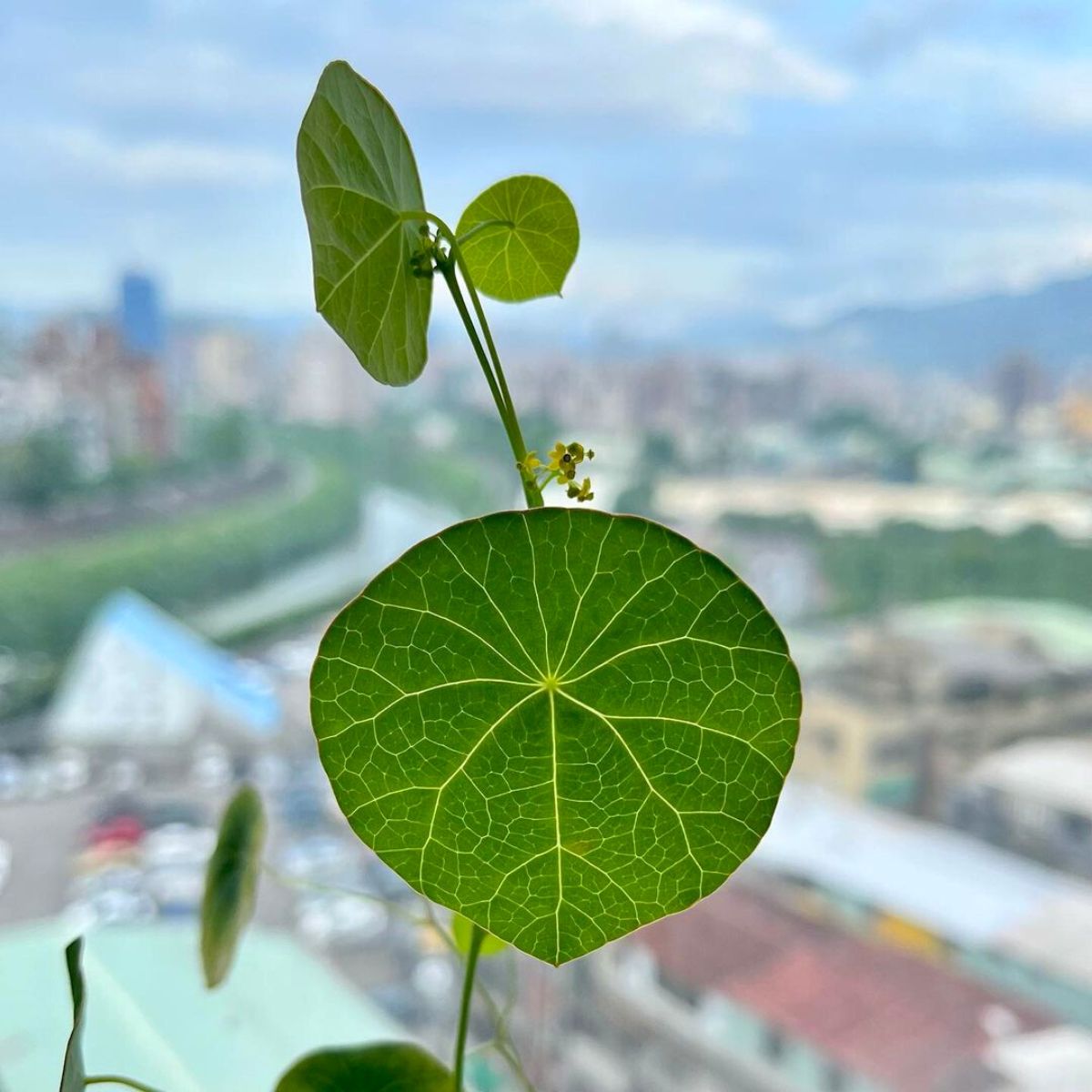
Follow these guidelines carefully and you'll get yourself a fully grown, amazing caudex Stephania plant while enjoying its unique and intricate foliage. Remember to observe and learn from your plant's specific needs, adjusting your care accordingly for optimal growth and success.
Stephania Erecta Is a Fantastic Indoor Plants
Stephania erecta is a fantastic plant to have indoors for several reasons:
Unique Appearance
The distinctive caudex and intricate foliage of Stephania erecta make it a visually intriguing and captivating plant. Its slender, vine-like stems and attractive leaves add a touch of exotic beauty to any indoor space, making it a conversation starter and a unique addition to your plant collection.
Low Maintenance
Stephania erecta is a relatively low-maintenance plant, making it suitable for indoor cultivation, especially for those who may not have extensive gardening experience. It can tolerate periods of neglect and has moderate water and light requirements, making it a resilient and forgiving plant to care for.
Compact Size
Compared to other climbing plants, the Stephania erecta plant tends to stay compact and does not require extensive space to thrive. This makes it an ideal choice for smaller indoor settings, such as apartments, offices, or windowsills, where it can be easily accommodated without overpowering the space.
Air Purifying Properties
Like many other houseplants, Stephania erecta contributes to improved indoor air quality. It helps to filter and purify the air by removing toxins and releasing oxygen, creating a healthier and more pleasant living environment.
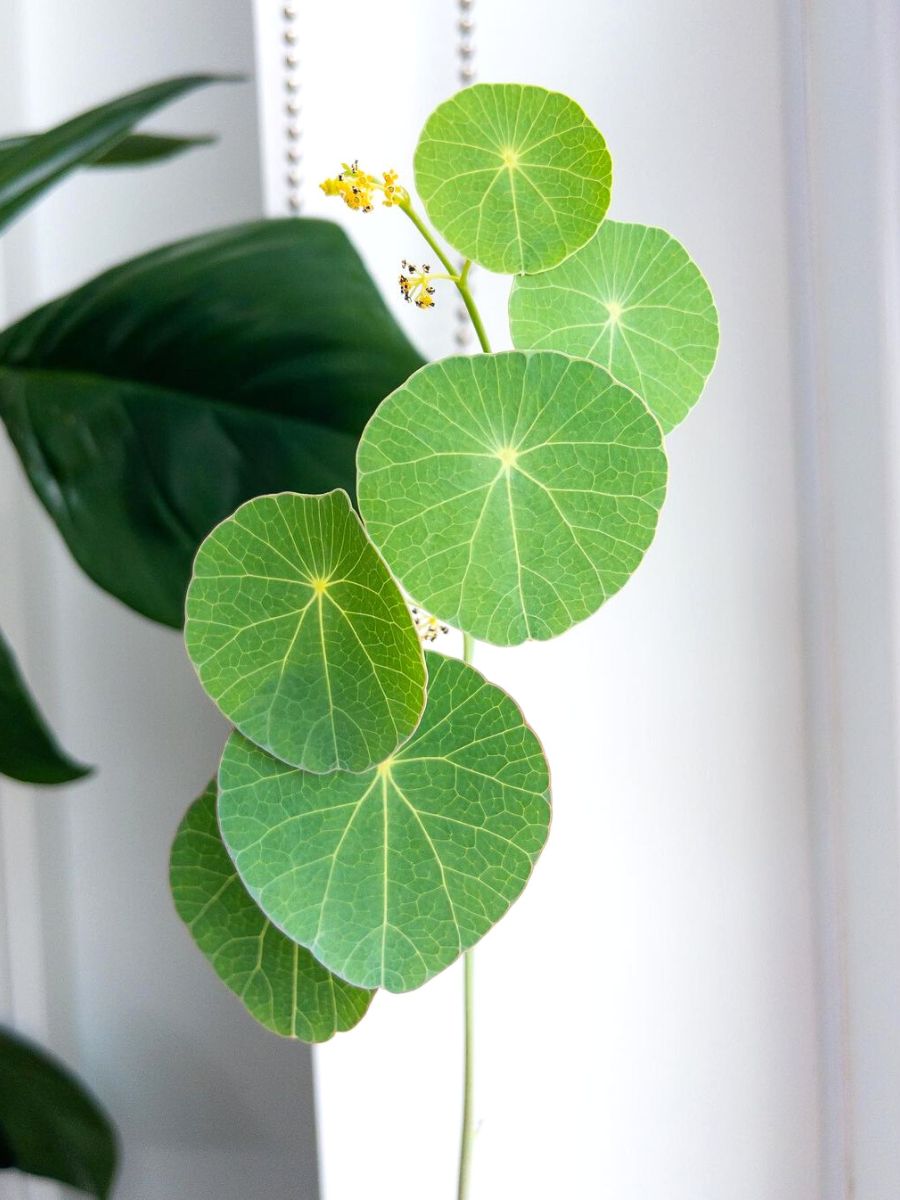
So, what time is it? Time to have a few Stephania Erecta plants at home as they make one of the most intriguing, beautiful, green, and perfectly-shaped indoor plants!

